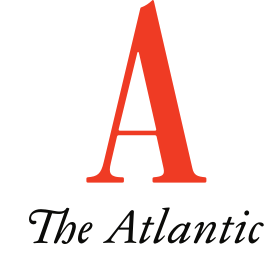Daily Briefing |
TODAY'S CLIMATE AND ENERGY HEADLINES
Expert analysis direct to your inbox.
Every weekday morning, in time for your morning coffee, Carbon Brief sends out a free email known as the “Daily Briefing” to thousands of subscribers around the world. The email is a digest of the past 24 hours of media coverage related to climate change and energy, as well as our pick of the key studies published in peer-reviewed journals.
Sign up here.
Today's climate and energy headlines:
- Scotland sets target of cutting greenhouse gases by 90% by 2050
- Russia’s Gazprom dodges fine in EU antitrust settlement
- White-furred animals could die out because of climate change, study suggests
- 'We can't see a future': group takes EU to court over climate change
- Car dealer tactics stall electric car sales
- Giant canyons discovered in Antarctica
- 'They're everywhere': has the decline of the seal hunt saved the polar bear?
- Leader comment: Scotland must rise to this ‘defining challenge’
- Climate change in the United States presented in 123 red, white and blue stripes
- Climate change is affecting mortality of weasels due to camouflage mismatch
- Atmospheric blocking as a traffic jam in the jet stream
News.
Scotland has announced it will strengthen its legally-binding goal of reducing greenhouse gas emissions, moving to a 90% cut by 2050 compared with 1990 – up from 80%. The Scottish government also said it would have a new interim target for 2020 of a 56% cut compared with the existing goal of 42%. The legislation was the “most ambitious anywhere in the world”, Nicola Sturgeon, first minister, told the Scottish parliament. The new target is “at the limit of feasibility”, according to the UK Committee on Climate Change, reports the Press Association. The target is tougher than the 100% cut that other nations have pledged, said Scottish Environment Secretary Roseanna Cunningham, because “our legislation will set more demanding, legally-binding, annual targets covering every sector of our economy”. However, the Scottish Greens described the decision as “timid”, reports The Scotsman. MSP Mark Ruskell said the Scottish National Party “should be seizing the opportunity. Science says we need strong action now.” Similarly, environmental campaigners have described the decision not to commit to a net zero target as a “missed opportunity”, reports the Independent. The new bill, which is now awaiting approval from the Scottish parliament, would also place a legal requirement on ministers to seek expert advice on whether a net zero emission target is feasible every five years, notes BusinessGreen. The BBC News and the Guardian also have the story.
The Russian gas company Gazprom has settled its seven-year antitrust case with the European Commission (EC), avoiding a fine by promising reforms to free the flow of gas through central and eastern Europe. A probe by the EC concerned the gas group’s alleged abuse of its dominance of gas markets across Europe. Rather than levy a fine to punish past behaviour, the commission chose to shape a legally-binding solution that would resolve the issues for the next eight years. EC Commissioner Margrethe Vestager said the “decision provides a tailor-made rulebook for Gazprom’s future conduct”, reports Politico: “It gives Gazprom customers in Central and Eastern Europe an effective tool to make sure the price they pay is competitive.” The EU’s decision allowed Gazprom to escape fines of as much as 10% of its global turnover, says Reuters – an outcome that has angered Poland and other countries that sought a tougher line from Brussels. Gazprom is “satisfied” with the decision, reports Reuters, describing the outcome as “the most reasonable outcome for the well-functioning of the entire European gas market”. Meanwhile, Reuters also reports that the national oil and gas company of Ukraine, Naftogaz, has said that EU-mediated talks over future Russian gas transit across the country to Europe must include Gazprom.
Animals that turn white in the winter are at risk from climate change as declining snow cover leaves them exposed and vulnerable, new research suggests. The study in Białowieża Forest, Poland, found that the number of days with permanent snow cover halved – from 80 to 40 – between 1997 and 2007. This means white-coated weasels are being caught out in a completely unsuitable environment, where they are easy prey for predators like foxes and crows. The results suggest that numbers of white-furred weasels have declined, while its brown-coated cousin is faring better, says the Times. The Conversation and MailOnline also cover the story. Earlier this year, Carbon Brief wrote about how hares and weasels with white winter camouflage could struggle to adapt to climate change.
A “People’s Climate Case” has been launched against EU institutions for failing to provide adequate protection from climate change. The case is being pursued in the Luxembourg-based general court – Europe’s second highest – against the European parliament and the council of the European Union for an “inadequate” target to reduce domestic greenhouse gas emissions by at least 40% by 2030. The litigants come from 10 families – from Portugal, Germany, France, Italy, Romania, Kenya and Fiji – as well as the Swedish Sami Youth Association Sáminuorra. They are asking the court to mandate EU lawmaking institutions to take more stringent climate measures, as well as to consider climate change as a human rights issue, reports Climate Home News. A spokesperson for the European Commission declined to speculate on what the case would mean for 2030 targets, but noted the Commission will present a strategy for long-term EU emissions reduction in line with the Paris Agreement later this year – as requested by the European Council.
Scientists have discovered three vast canyons beneath the South Pole, which could play a key role in controlling the flow of ice across the continent. Using radar, the researchers discovered deep troughs that run for hundreds of kilometres, cutting through tall mountains – none of which are visible at the snowy surface of the continent. If ice in that region of Antarctica thins as the climate warms, these channels could accelerate mass towards the ocean, further raising sea levels, the researchers warn. Meanwhile, the Mail Online carries “spectacular” helicopter footage of the A68 iceberg that broke off from the Larsen C ice shelf in Antarctica last year.
News .
“Dismissive” car dealers are a major barrier to boosting sales of electric vehicles (EVs), a new study suggests. Researchers posing as car shoppers at 126 dealerships in Scandinavia and Iceland found that sales staff strongly pushed petrol and diesel powered cars – with 77% not even discussing EVs, despite having them on sale. The researchers say dealers perceived EVs as less profitable, lacked technical knowledge and believed that EVs took longer to sell. Meanwhile, Reuters reports that increasing popularity of EVs may create a crunch for supplies of cobalt in the early-to-mid 2020s. Carbon Brief recently published an explainer on the metals that are key to a low-carbon future. And elsewhere, another Reuters article reports that Toyota plans to build a plant to manufacture hydrogen fuel cell stacks – a key component of fuel cell vehicles – as it seeks to ramp up manufacture of hydrogen-powered cars.
Comment.
Reporting from the Canadian coast of the Labrador Sea, the Guardian’s Greg Mercer reports on how the collapse in the Newfoundland’s seal fishery has “created a veritable feast for Labrador’s polar bears”. Harp seals of the north-west Atlantic have proliferated – they now number about 7.4m, more then seven times the population in the 1970s. As a result, Labrador’s polar bears have shifted their diet from ring seals to their more southerly cousins. This shift has coincided with a “dramatic” loss of sea ice, says Mercer, which shows the region “has lost about a third of its ice cover in the past decade”. But the bears have “jumped on the harp seal boom,” says Jim Goudie, wildlife manager for Nunatsiavut, the regional indigenous self-government – they “appear to have adapted for this moment in time…We’re seeing them further south than in the past.”
“Climate change is leading to a technological revolution and Scotland should be at the forefront of it,” says an editorial in The Scotsman, responding to the new target in Scotland to cut greenhouse gas emissions by 90% by 2050. “The need to switch from fossil fuels to a zero-carbon economy to prevent dangerous climate change is a clear imperative that the world has belatedly come to realise,” it says. “Being at the forefront of the renewable revolution holds out the prospect of considerable economic rewards,” the article argues, “on top of the benefits for the climate”.
The Post reports on new visualisations by the University of Reading’s Prof Ed Hawkins that use colour-coded stripes to show how the US and the planet as a whole have steadily warmed in recent decades. “The blue stripes portray cooler years, while the reds are hot,” explains the Post’s Jason Samenow: “The progression from more blue to more red over time is crystal clear.” The visualisation “removes all the distractions of standard graphs,” said Hawkins, “and allows the viewer to just see the long-term trends and variations in temperature without needing to interpret anything else.”
Science.
Climate change can pose challenges for mammals that moult seasonally, as declining snow cover can make white-furred animals more susceptible to predators. This paper examines brown and white populations of weasels in Northeast Poland. They find that the share of the white subspecies decreases with decreasing numbers of days with snow cover. This means that climate change will strongly influence the mortality of the white-coated weasels due to prolonged camouflage mismatch, which will directly affect the abundance and geographical distribution of this subspecies.
Atmospheric blocking due to meandering of the jet stream often causes weather extremes in midlatitude regions. However, the onset mechanism of blocking is not well understood. This paper shows that there is a close analogy between blocking and traffic congestion on a highway, and that they can be described by a common mathematical theory. The theory predicts that the jet stream has a capacity for wave activity just as the highway has traffic capacity, and when it is exceeded, blocking manifests as congestion.Climate change likely affects blocking frequency by modifying the jet stream’s capacity.










